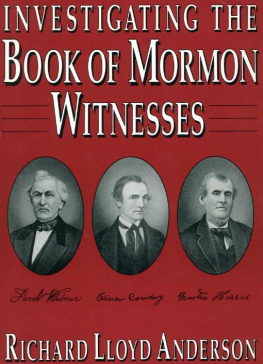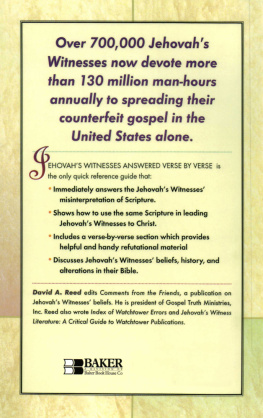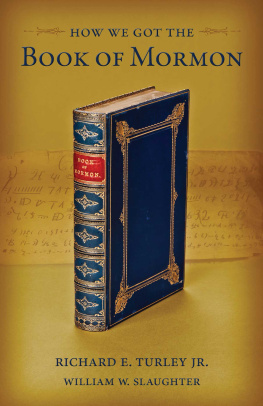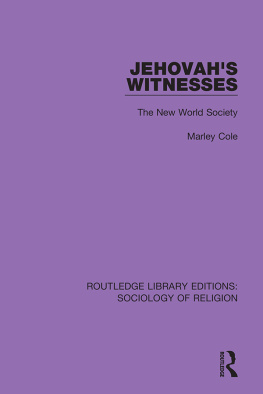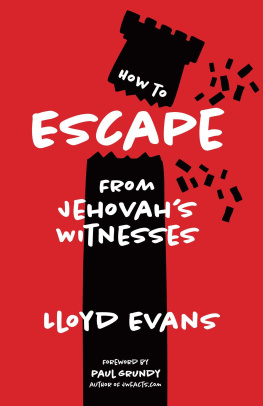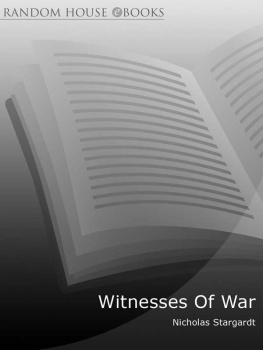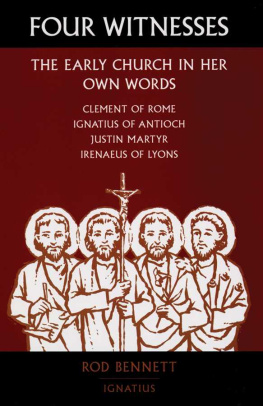Investigating the Book of Mormon Witnesses
Richard Lloyd Anderson
1981 Deseret Book Company.
All rights reserved. No part of this book may be reproduced in any form or by any means without permission in writing from the publisher, Deseret Book Company, P.O. Box 30178, Salt Lake City Utah 30178. This work is not an official publication of The Church of Jesus Christ of Latter-day Saints. The views expressed herein are the responsibility of the author and do not necessarily represent the position of the Church or of Deseret Book. Deseret Book is a registered trademark of Deseret Book Company.
Preface
Preface
"Let him see anything he wants." This terse response of the LDS Church historian authorized serious research on the Book of Mormon witnesses. At that time I was aware that eleven men had given impressive testimonials in printed and unprinted sources. I was determined to examine original manuscripts and then follow their careers in civil records and newspapers of each county where they lived. Much later I published ten articles (in the Improvement Era during the year beginning August 1968) that were valued for their new data by the Mormon History Association, winning the annual award for best article. These installments are updated and presented here with supplementary chapters. In the future I hope to add longer books on the subject, but not more significant ones. Surveys often lightly skim the surface, but a good summary has a far more serious goal. It resembles good art in the sense that it comes only after an author pays the price to know his subject.
Much has been learned about the major Book of Mormon witnesses. Above all is the drama of their solemn affirmations, in the quiet intimacy of friendship and in the hostility of ridicule and even persecution. Theirs is a compelling life story. Here are modern men who can be examined closely on their astounding claimof being commissioned by an angel's appearance and by God's voice to testify of ancient scripture. Here are others who describe a physical experience of seeing and handling the metal record. Discovery of early scrolls or plates will always fascinate people, and adding the miraculous should only heighten the significance of the claim. Can it be taken seriously? It must be taken seriously if the witnesses' words are taken seriously. These eleven were interviewed by both the careful and the careless, leaving scores of accounts that can furnish not only the accurate quotation, but also the partial quotation and the misquotation. So their true experience will be understood only from their personal writings, speeches, and responsibly reported interviews. These Book of Mormon witnesses sincerely sought answers and risked comfort and honor in unwavering assurance that God had acted. After years of working with their lives and their words, I am deeply convinced that their printed testimonies must be taken at face value.
Acknowledgments
Naming some contributing to this work means that many others go unmentioned because of short space. I owe a debt to the pioneer researchers on the witnesses, Andrew Jenson, B. H. Roberts, and Preston Nibley, and to three whose masters' theses at Brigham Young University were the first systematic collections on the lives of the three witnesses. These men are Wayne C. Gunnell; Ebbie L. V. Richardson; and Stanley R. Gunn, whose work on Oliver Cowdery was published.
The richest resources on the Book of Mormon witnesses are in the archives of The Church of Jesus Christ of Latter-day Saints. Administrators in the Historical Department have given consistent cooperation, including Earl E. Olson, Donald T. Schmidt, Jeffery Johnson, James L. Kimball, Jr., and their competent assistants, who deserve much more than my anonymous thanks here.
Many important manuscripts are at the Library-Archives of the Reorganized Church of Jesus Christ of Latter Day Saints at Independence, Missouri. These were made available over the years by Church Historian Richard P. Howard and many capable assistants. Invaluable help for reconstructing the early community life of the Whitmers was given by friend and local historian John S. Genung of Waterloo, New York. Other essential aid came as publisher John Van Camp allowed me to work evenings and early mornings in the files of the Advertiser-Tribune at Tiffin, Ohio, the home of Oliver Cowdery for seven years.
Capable secretaries transformed cluttered drafts into readable pages; they will know the value of their contribution without my making a long list. Some photographs appear by courtesy of the LDS Historical Department or the LDS Graphics Design and Resources Division. My thanks go to Church News editor Dell Van Orden for furnishing his photograph of the recently reconstructed Whitmer cabin. Special appreciation goes to my wife, Carma de Jong Anderson, who prepared final copy and did the layout of the Book of Mormon translation map. I continue to benefit from her good judgment in studying early Mormonism, where her interests are as intense as my own.
Places of Book of Mormon Translation.

Assistants and Eyewitnesses
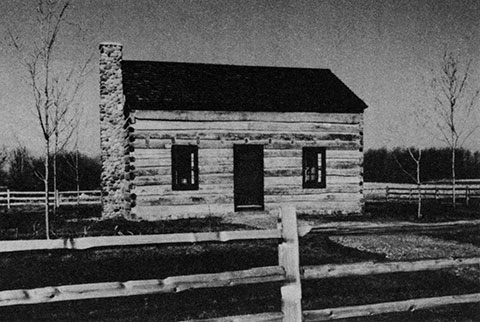
Whitmer farm and reconstructed family home, Fayette, New York.
Joseph Smith's criticisms of Christianity in the nineteenth century are remarkably like Christian self-criticisms of the twentieth. The youth was confused by multiplying churches and conflicting claims. Christian leaders in recent decades have also repeated their frustration at "the scandal of the divided church." After long inquiry young Joseph found no answers among quarreling leaders, so he turned to God alone. In past decades world councils and international committees have also sought the "renewal of the spirit." But the results are less than convincing. Creeds have softened, inter-faith negotiations continue, but competitive Christianity remains. Its tragedy is the confusion of human systems that inadequately direct the faith of innumerable men and women of great commitment. Early Christians were "of one heart and of one soul" (Acts 4:32), but Christianity now better resembles the early world confounded after Babylonian pride "that they may not understand one another's speech." (Gen. 11:7.) Religious leaders can quote past prophets, but who can divinely lead God's people out of the bondage of confusion today?
This question is even more urgent than it was on the spring day of 1820 when Joseph Smith strode into the New York woods and returned shaken by a divine decree: "I was answered that I must join none of them, for they were all wrong." This message may be ridiculed or ignored, but precedents are on Joseph Smith's side, for few religious systems have escaped the gradual corruption of embracing the world that they originally were called to confront. What have past prophets said as they returned from sacred visions? Isaiah was overwhelmed by God's presence and received the message that his generation no longer knew Godthat they would hear "but understand not," that they would see "but perceive not." (Isa. 6:9.) Six centuries later Jesus quoted these words to the Jewish people in solemn warning that they no longer walked in God's path. (Matt. 13:14-15.) Ezekiel also withstood the glory of the Lord and received from his lips the commission to go to the chosen but "rebellious nation"for "they and their fathers have transgressed against me, even unto this very day." (Ezek. 2:3.) Ezekiel then tasted the book of God's decree for the Israelites, sweet because it came from the Lord and bitter because it condemned their sins and promised judgment. Nor did the God who called the early Christians speak with another voice. Six decades after the crucifixion John the Revelator came from the fiery vision of the exalted Christ to severely warn the Christian churches that they would lose their places without immediate repentance. (Rev. 2:5.) Who has aspired to God's presence today? The blunt condemnation of current religions reported by Joseph Smith is a profound mark of credibility when read by the light of past prophets.

